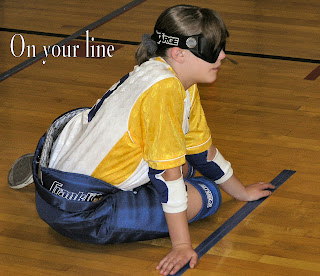
 "Hey, Bonnie! Ya gotta come to the Mantanza for Patricia tomorrow! It's out Isleta Blvd - bring Mike! He'll like it!" says Ron Paiz at Grandparents Day at St. Mary's School in Albuquerque.
"Hey, Bonnie! Ya gotta come to the Mantanza for Patricia tomorrow! It's out Isleta Blvd - bring Mike! He'll like it!" says Ron Paiz at Grandparents Day at St. Mary's School in Albuquerque..
Ron's daughter Patricia Paiz is running for Bernalillo County Commissioner (District 2) in the General Election coming up November 8th. Patricia is outside of our District in the Northeast Heights of Albuquerque - but, hey, we gotta find out what a Matanza is!
In this country there is no better place to find the preservation of the old Spanish ways than New Mexico, as this state is well known for having been isolated hundreds of years by vast rugged distances and warring Indians. In this case, the matanza was more of a political celebration event for Patricia - she also invited some of her fellow candidates on the ballot for Supreme Court (Nakamura), Secretary of State (Nora Espinosa), Judges.
So well preserved are the origins of the American West that even the 15th century "foundation" livestock scarcely available in other parts of the world thrive in New Mexico. You can still find descendants of the rugged, enduring, power house-in-a-small-package Spanish Barb horses, Churra sheep, and Corriente cattle. You can hear cowboy history in the old, spoken Spanish. Although these old vaqueros are increasingly hard to find, there remain a few smaller than average, more rugged than average Onate colony decendents who will speak to you in the 15th century Spanish of the conquistadores preserved through fifteen generations of oral tradition.
Happily, to this day, the romance of wide open western spaces lives on in New Mexico. The Spanish caballero, already sporting a legacy of proud horsemanship even before Columbus' arrival in North America, saw the first rodeos whenever young vaqueros had some free time, an opportunity to turn work into play, and to show off their skills.
 |
| Cooking is part of the fun ... isn't it? |
During the time of these first rodeos standardized rules and point systems were developed to determine who would win the vaquero competitions. "Jueces de campo," or rodeo judges presided over the rodeos to settle ownership disputes and assure that stock were branded correctly. Generally the vaqueros tended the stock on the open range until it was time to sell, brand, or butcher the animals. Anyone of these events required a rounding up of the animals - "al rodear." This was called a rodeo.
The killing (butchering) of an animal which frequently accompanied a rodeo was called a "matanza." The first recorded references to a Rodeo in the official republic of the United States are made in old New Mexico family journals.
 |
| Garrett lassoes his Dad, Ron Jr. |
As matanza researcher Cynthia Martin explains “A traditional Matanza is a family and community-gathering event, with friends and neighbors helping in the labor-intensive job of processing a large pig, goat or sheep”.
So Bonnie and I had to help - see the photo, yes, we're cooking! ? .. Sorta ...
“Taking at least an entire day, the process goes from the slaughtering the animal and butchering the meat to cooking the various meat products and preparing what is left for distribution and storage. Of course all those helpers also need to be fed, so the women in the family plan and prepare large amounts of food for the event.”
Today some Matanza celebrations are coming back. They are more in the tradition of Home cooking, Family and friends in the 21st century.
A special thanks to Patricia's donors and to all who participated in this Matanza, which we now realize is an ancestral legacy, left from the espanos. Historically the celebration was done in the winter to prevent spoilage and so the tradition is carried on in the winter today too. But this one had to occur on a weekend prior to Nov 8th. Don't forget to vote!
 |
| Bill Reed: photographer and spouse of the Candidate! |
 |
| Ron Paiz Sr, Rafael Padilla, Bernadine Paiz - our hosts! |









































